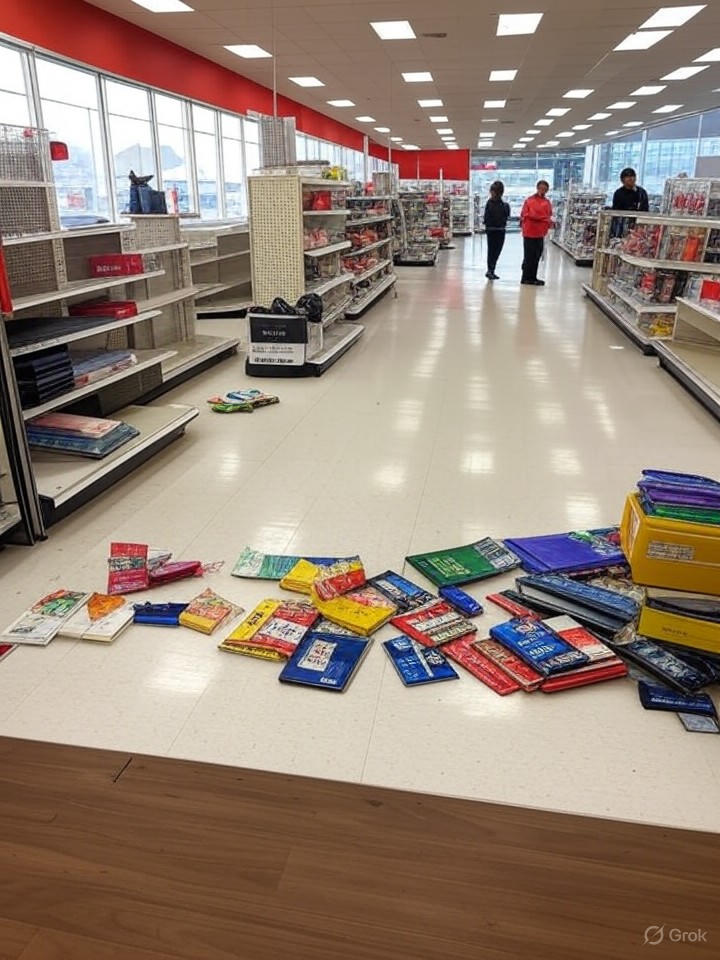Target Corp., the Minneapolis-based retail giant once celebrated for its chic, affordable merchandise, is grappling with a confluence of challenges that have eroded its market position and investor confidence. Recent visits to three Target stores across the U.S., as detailed in a report by Business Insider, reveal symptoms of deeper issues: sparse foot traffic, disorganized shelves, and a palpable sense of neglect that contrasts sharply with the retailer’s heyday. Analysts anticipate mixed earnings results this Wednesday, with sales growth stalling amid economic pressures and shifting consumer behaviors.
The stores inspected—in urban, suburban, and rural settings—showed common problems like empty aisles during peak hours and overstocked back rooms, echoing complaints from employees about operational inefficiencies. This comes as Target’s comparable sales have declined for several quarters, with the company warning of further slips through 2025, according to coverage in AP News. Retail experts point to inventory mismanagement and a failure to adapt to price-sensitive shoppers who are increasingly turning to rivals like Walmart and Costco.
Amid these operational woes, Target’s strategic missteps have compounded its troubles, particularly in navigating cultural and political sensitivities that have alienated core customer segments. The retailer’s rollback of diversity, equity, and inclusion (DEI) initiatives, including scaling back Pride Month merchandise following boycotts, has drawn criticism from both progressive shoppers and conservative groups, leading to a perceived loss of brand identity. As one former loyalist told Business Insider, the chain “used to be the fancier Walmart,” but now feels adrift, prompting her to shift spending to Costco, where foot traffic has surged.
Target’s CEO Brian Cornell has publicly acknowledged mistakes, such as mishandling inventory during inflationary spikes, which led to markdowns and profit squeezes, as reported by TheStreet. Efforts to rebound include aggressive store expansions and partnerships, yet these moves face skepticism; for instance, the impending end of the Ulta Beauty shop-in-shop concept in 2026, announced via NBC New York, signals a retreat from successful collaborations that once drove beauty sales.
Broader economic factors exacerbate Target’s plight, with consumers cutting back on discretionary items like apparel and home goods—categories where Target has historically excelled. Foot traffic data from Placer.ai, highlighted in TheStreet, shows an 18-month decline in visits to Target stores, while Walmart’s traffic grows, underscoring a competitive divergence. Internal doubts among employees, as noted in The Food Institute, reflect concerns over pricing strategies and e-commerce lags.
For industry observers, Target’s path forward hinges on reclaiming its “cheap chic” ethos while addressing operational disarray and cultural misalignments, but the retailer’s recent history suggests a protracted recovery. With projections from AInvest forecasting a 0.8% revenue dip this year before a modest 2026 rebound, executives must prioritize inventory optimization and targeted marketing to win back disillusioned shoppers. Critics argue that without bold innovations, such as enhancing digital integration or refining product assortments, Target risks further erosion in a market dominated by value-driven competitors.
Even as Target bets on new store openings to stimulate growth, per announcements covered in TheStreet, investor sentiment remains cautious. Stock performance has lagged, with shares falling amid CEO contract uncertainties, as detailed in CNBC. The company’s involvement in politically charged events, like its $1 million donation to President Trump’s 2025 inauguration, reported by Business Insider, adds another layer of complexity, potentially polarizing its customer base further.
Ultimately, Target’s struggles highlight the perils of retail in an era of economic volatility and social division. To regain momentum, the chain must balance affordability with aspirational appeal, drawing lessons from past visits and data trends that paint a picture of a retailer at a crossroads.




 WebProNews is an iEntry Publication
WebProNews is an iEntry Publication